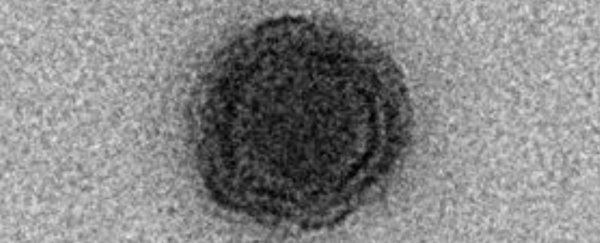Scientists have identified an enigmatic virus whose genome seems to be almost entirely new to science, populated by unfamiliar genes that have never before been documented in viral research.
The so-called Yaravirus, named after Yara – or Iara, a water-queen figure in Brazilian mythology – was recovered from Lake Pampulha, an artificial lake in the Brazilian city of Belo Horizonte.
While Yaravirus (Yaravirus brasiliensis) may be no supernatural siren, the virus could prove to be just as mysterious as the water nymph of legend.
That's because the virus constitutes "a new lineage of amoebal virus with a puzzling origin and phylogeny," the research team explains in a new pre-print paper about the discovery.
Two of the senior members of that team – virologists Bernard La Scola from Aix-Marseille University in France, and Jônatas S. Abrahão from Brazil's Federal University of Minas Gerais – ought to know what they're talking about.
Two years ago, the pair helped to discover another water-dwelling viral novelty: Tupanvirus, a giant virus found in extreme aquatic habitats.
Giant viruses, as opposed to the regular variety, are so-called because of their huge capsids (protein shells that encapsulate virions - virus particles).
These much larger viral forms were only discovered this century, but they're not only notable for their size. They also possess more complex genomes, giving them the ability to synthesise proteins, and therefore perform things like DNA repair, plus DNA replication, transcription, and translation.
Prior to their discovery, it was thought that viruses couldn't do things like that, being regarded as relatively inert, non-living entities, only capable of infecting their hosts.
We now know viruses are much more complex than was once believed, and in recent years, scientists have uncovered other kinds of viral forms that similarly challenge our thinking about how viruses can spread and function.
The new discovery, Yaravirus, does not appear to be a giant virus, composed as it is of small 80 nm-sized particles. But what's notable about it is how seemingly unique its genome is.
"Most of the known viruses of amoeba have been seen to share many features that eventually prompted authors to classify them into common evolutionary groups," the authors write.
"Contrary to what is observed in other isolated viruses of amoeba, Yaravirus is not represented by a large/giant particle and a complex genome, but at the same time carries an important number of previously undescribed genes."
In their investigations, the researchers found over 90 percent of Yaravirus genes had never been described before, constituting what are known as orphan genes (aka ORFans).
Only six genes found bore a distant resemblance to known viral genes documented in public scientific databases, and a search through over 8,500 publicly available metagenomes offered no clues as to what Yaravirus might be closely related to.
"Using standard protocols, our very first genetic analysis was unable to find any recognisable sequences of capsid or other classical viral genes in Yaravirus," the researchers explain.
"Following the current metagenomic protocols for viral detection, Yaravirus would not even be recognised as a viral agent."
As for what Yaravirus actually is then, the scientists can only speculate for now, but suggest it could be the first isolated case of an unknown group of amoebal virus, or potentially a distant kind of giant virus that may somehow have evolved into a reduced form.
Either way, it's clear we still have an awful lot to learn, the researchers say.
"The amount of unknown proteins composing the Yaravirus particles reflects the variability existing in the viral world and how much potential of new viral genomes are still to be discovered," the authors conclude.
The findings are reported in bioRxiv.
